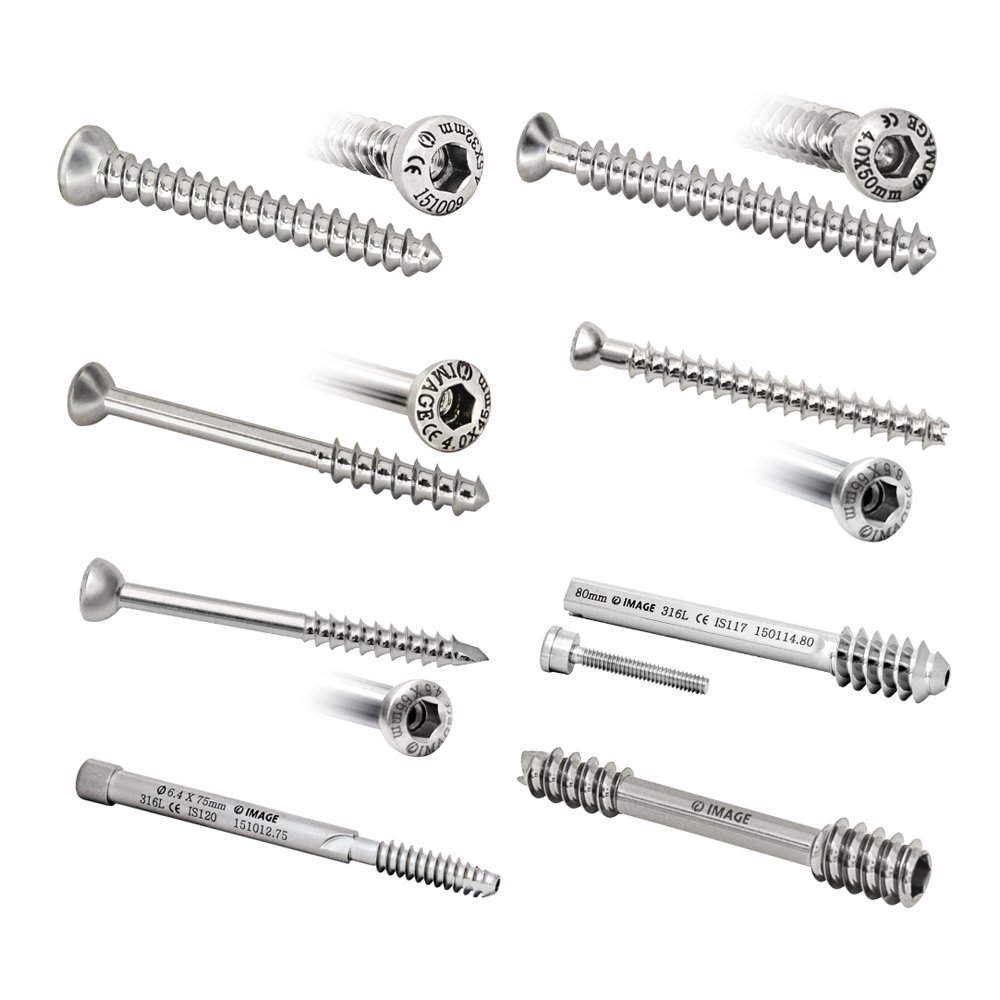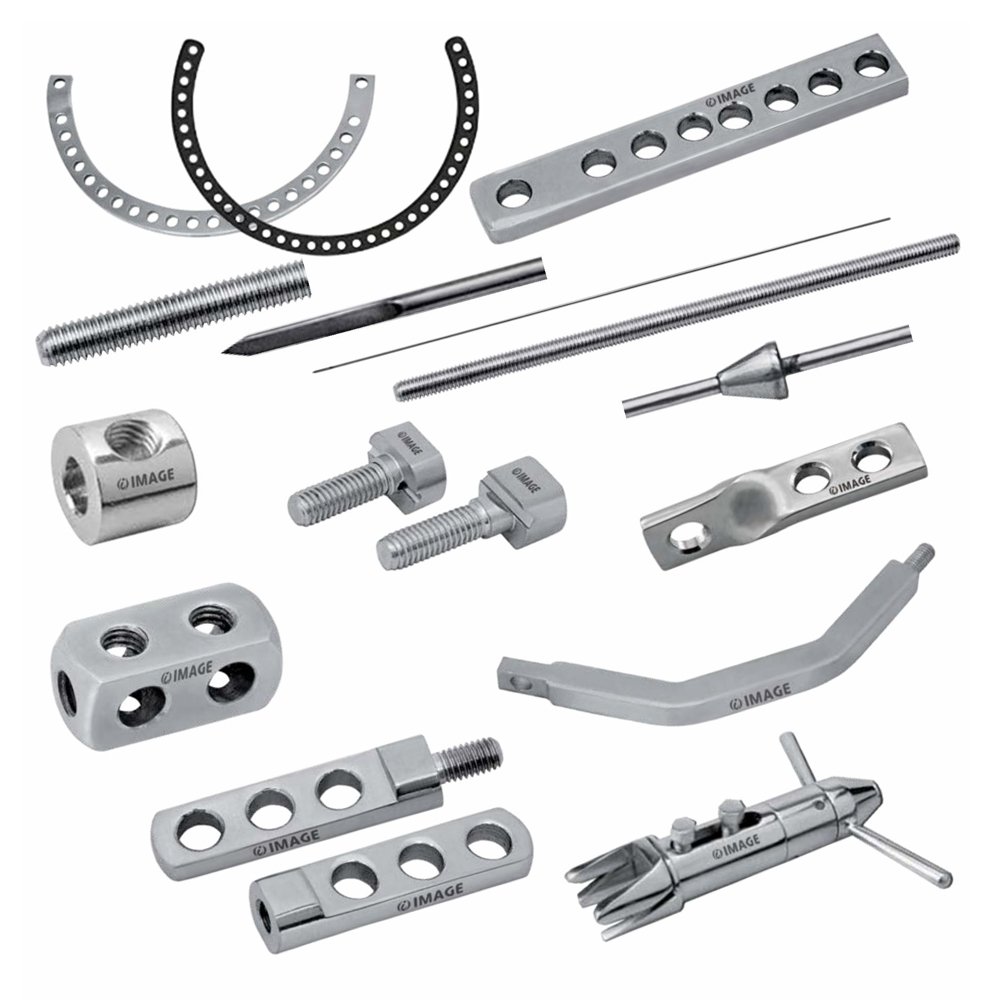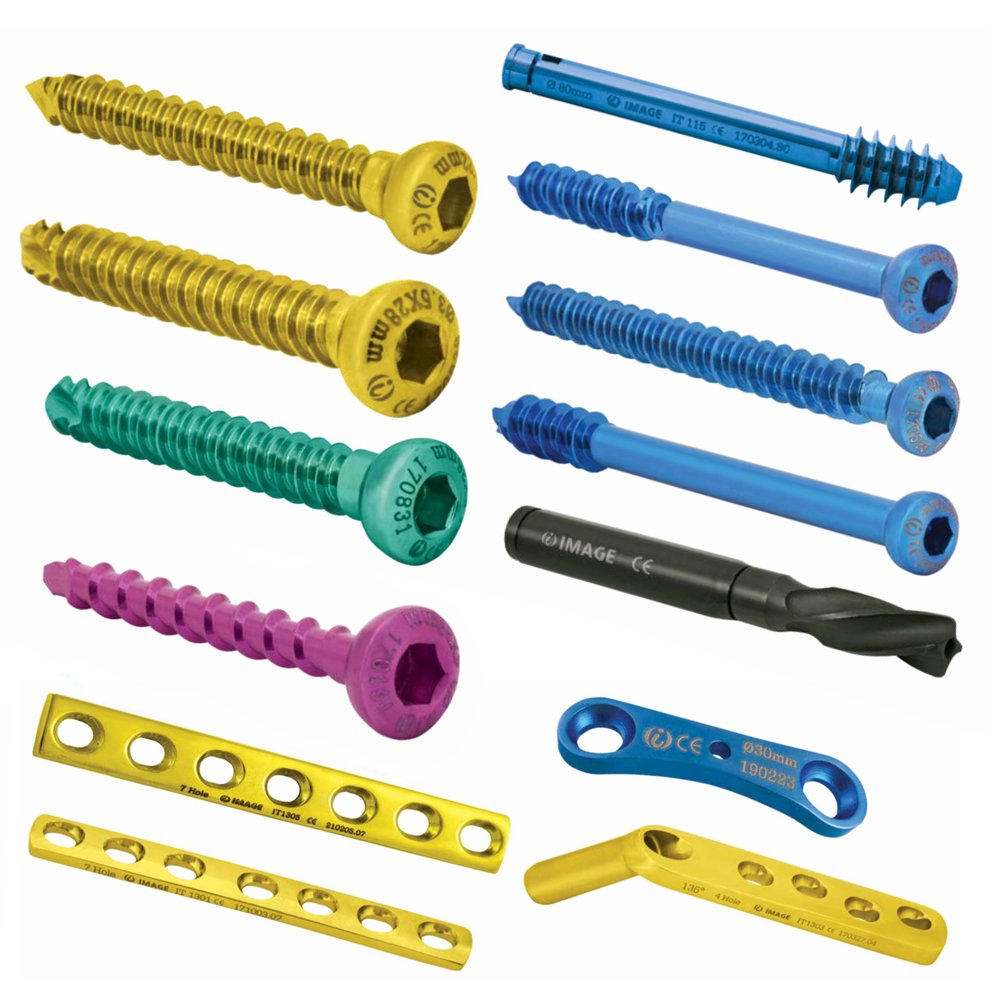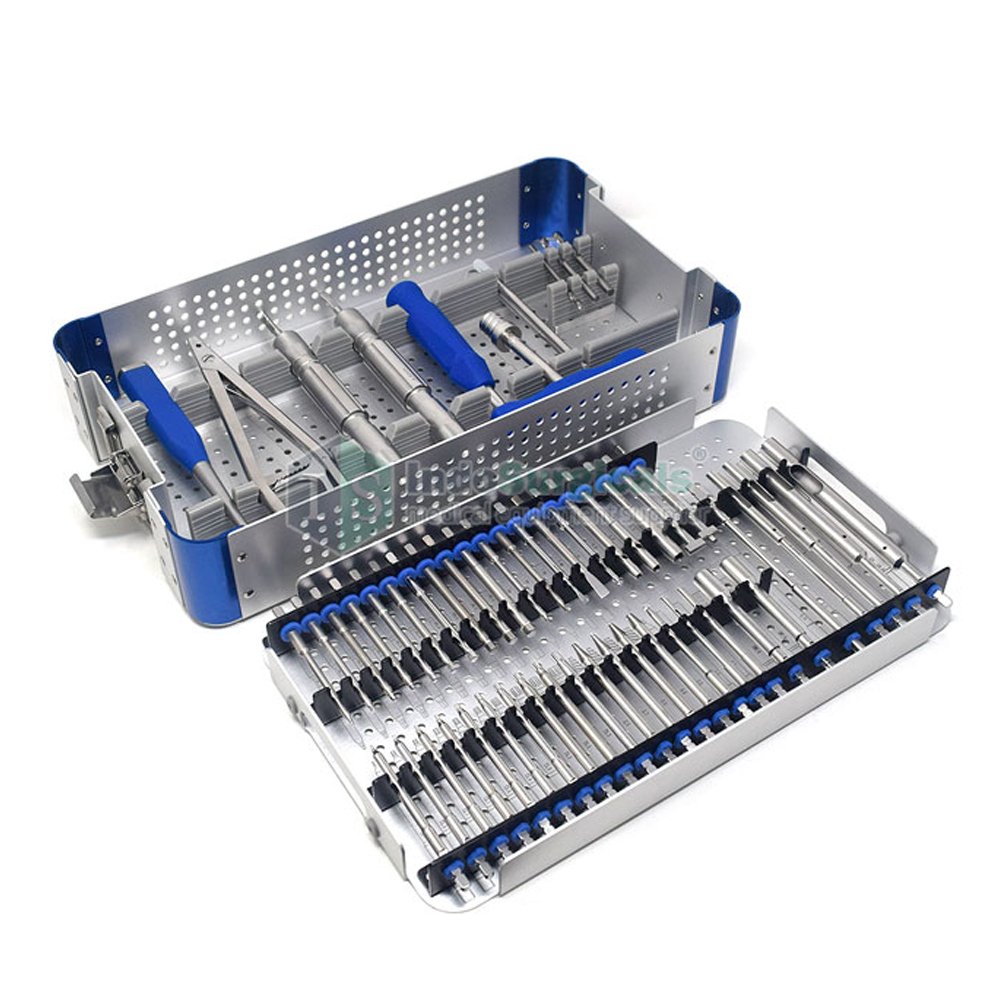Purpose and Function:
Orthopedic bone screws are designed to hold fractured bone segments together, providing stability that allows for proper alignment during the healing process.
They may be used in conjunction with other orthopedic implants, such as plates, rods, or wires, to create a supportive framework for bone fixation.
Types of Orthopedic Bone Screws:
Cortical Screws: Designed for use in the dense outer layer (cortex) of bones.
Cancellous Screws: Suited for the spongy, less dense inner portion (cancellous bone) of bones.
Cannulated Screws: Hollow in the center, allowing for insertion over a guide wire, often used in minimally invasive procedures.
Variable Angle Screws: Provide flexibility in screw placement angles, enhancing surgical versatility.
Materials:
Orthopedic bone screws are typically made from biocompatible materials such as titanium or stainless steel to minimize the risk of adverse reactions within the body.
Design Features:
Thread Design: Variable thread patterns for different bone types and applications, optimizing screw purchase and stability.
Head Types: Various head designs, including flat, round, or countersunk heads, to accommodate specific surgical requirements.
Self-Tapping: Some screws have a self-tapping feature, allowing them to cut their own threads during insertion, reducing the need for pre-drilling.
Surgical Techniques:
Orthopedic bone screws are inserted using specific surgical techniques. This may involve drilling a pilot hole and carefully placing the screw to ensure optimal fixation without causing additional damage to the bone.
Applications:
Bone screws are used in a wide range of orthopedic procedures, including fracture fixation, spinal fusion surgeries, joint reconstruction, and corrective osteotomies.
Biomechanical Considerations:
The selection of the appropriate type and size of bone screw depends on factors such as the type of fracture, bone density, patient age, and the biomechanical demands of the specific anatomical location.
Postoperative Care:
After the surgical placement of orthopedic bone screws, patients may undergo rehabilitation and physical therapy to aid in the recovery and restoration of functional mobility.






Reviews
There are no reviews yet.